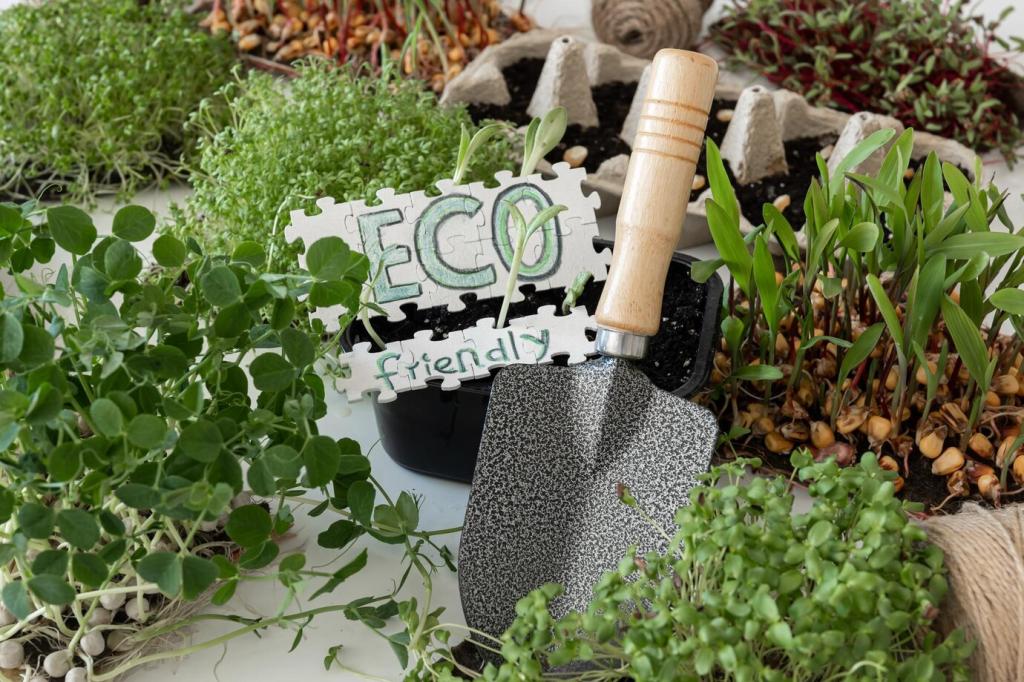
Water-Efficient Irrigation Systems: Thrive With Less, Grow With Intention
Chosen theme: Water-Efficient Irrigation Systems. Welcome to a space where every drop has a purpose. Together, we’ll explore smarter tools, thoughtful designs, and real stories that turn careful watering into greener landscapes and richer harvests. Join the conversation, share your questions, and subscribe for practical insights shaped by changing climates and everyday challenges.


Why Water Efficiency Matters Right Now
Agriculture uses about 70% of global freshwater withdrawals, and outdoor urban irrigation can spike summer demand dramatically. Each saved gallon eases pressure on aquifers, budgets, and ecosystems. How much could your site save this season? Tell us.
Why Water Efficiency Matters Right Now
Erratic rainfall and hotter nights push plants to their limits. Water-efficient systems buffer stress by delivering moisture when roots need it most. Share your climate challenges, and let’s compare strategies that have actually worked in the field.
ET-based controllers for weather-savvy schedules
Evapotranspiration (ET) reflects how much water plants actually lose to heat, sunlight, wind, and humidity. Controllers that adjust runtime with daily ET keep soil moisture stable. Comment if you’ve tried daily versus weekly ET updates.
Soil moisture sensors at root depth
Capacitance or tensiometer sensors measure moisture where roots drink, not at the surface. They trigger watering only when thresholds dip below set points. Share your ideal threshold targets for loam, sand, or heavy clay soils.
Flow meters and instant leak detection
Inline flow sensors learn normal usage and catch anomalies fast—think broken laterals or stuck valves. Set alerts to your phone and stop water loss in minutes. Tell us your quickest leak discovery and how you handled repairs.

Drip and Micro-Irrigation: Precision Where It Counts
Conversion kits let you swap pop-up sprays for drip manifolds using existing lateral lines. Add pressure regulation and filtration, then map emitters to plant spacing. Share photos of your before-and-after zones to inspire others.
Designing for Distribution Uniformity and Plant Health
Group plants by similar water requirements, exposure, and soil type so each zone gets an appropriate schedule. Mixing high and low demand plants wastes water. How have you reorganized beds to simplify hydrozones without losing style?


Designing for Distribution Uniformity and Plant Health
Regulators prevent misting in sprays and burst emitters in drip lines, while filters block clogs from minerals and debris. Size them to flow rates and system length. Share the filter maintenance routine that keeps your lines clear.
A shaded courtyard, windy ridge, or heat-reflective wall can alter water demand dramatically. Combine station data with on-site observations to fine-tune runtimes. Where is your property’s thirstiest microclimate, and how did you adapt?
Scheduling by Data: Weather, Soil, and Plant Signals

Maintenance, Audits, and Building a Learning Community
Inspect heads, lines, and valves while zones run. Straighten tilted sprays, clear clogged emitters, and note pressure anomalies. Ten focused minutes prevent costly surprises. What checklist items stopped the biggest leaks in your experience?
Maintenance, Audits, and Building a Learning Community
Flush drip lines, clean filters, update firmware on controllers, and recalibrate sensors. Record changes so patterns emerge over time. Would shared templates help? Comment, and we’ll publish a printable maintenance log for subscribers.


